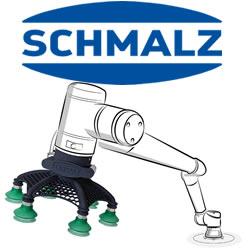LUCID Expands Triton2 – 2.5GigE Camera Family with Latest Sony Pregius S Image Sensors
The image sensors in these models include the 1.6 MP Sony IMX273 running at 166 fps, the 2.3 MP IMX392 at 116 fps, the 5.0 MP IMX264 at 35 fps, and the 12.3 MP IMX304 at 22 fps. Additional models are planned for release later this year.
Richmond, BC, Canada - September 26, 2023 - LUCID Vision Labs, Inc., a designer and manufacturer of unique and innovative industrial vision cameras, today announced the expansion of its Triton2 camera series featuring the latest Sony Pregius S sensors with a 2.5 GigE interface.
Triton2 leverages LUCID's trusted Factory Tough™ industrial platform, delivering unparalleled performance within a compact, cost-effective, and uncompromising camera design. The adoption of the 2.5GigE (300 MB/s) interface enhances bandwidth, while retaining the benefits of a compact size, efficient thermal management, and Power over Ethernet (PoE) support.
"We're excited about the continued expansion of our Triton2 - 2.5GigE lineup, offering a wider array of Sony Pregius S image sensors and accelerated frame rates," says Rod Barman, Founder and President at LUCID Vision Labs. "Triton2 offers the perfect balance between performance, size and cost, providing a natural upgrade path for existing GigE and USB 3.0 users seeking faster acquisition speeds without major backend system modifications."
Designed for seamless integration, the 2.5GBASE-T Triton2 enables rapid data transfer rates of 300 MB per second and supports standard CAT5e and CAT6 cables up to 100 meters.
All LUCID cameras conform to the GigE Vision 2.0 and GenICam3 standards and are supported by LUCID's own Arena software development kit. The Arena SDK provides customers with easy access to the latest industry standards and software technology. The SDK supports the Windows, Linux 64-bit and Linux ARM operating systems, and the C, C++, C# and Python programming languages.
The new Triton2 models TRT016S, TRT023S, TRT050S and TRT120S are now available for order. For more information, please visit our Triton2 product page or contact Sales.
About Us
LUCID Vision Labs, Inc. designs and manufactures innovative machine vision cameras and components that utilize the latest technologies to deliver exceptional value to customers. Our compact, high-performance GigE Vision cameras are suited for a wide range of industries and applications such as factory automation, medical, life sciences and logistics. We innovate dynamically to create products that meet the demands of machine vision for Industry 4.0. Our expertise combines deep industry experience with a passion for product quality, technology innovation and customer service excellence. LUCID Vision Labs, Inc. was founded in January 2017 and is located in Richmond, BC, Canada with local offices in Germany, Japan, China and Taiwan. For more information, please visit www.thinklucid.com.
Featured Product

Schmalz Technology Development - The Right Gripper for Every Task
In order to interact with their environment and perform the tasks, lightweight robots, like all industrial robots, depend on tools - and in many cases these are vacuum grippers. These form the interface to the workpiece and are therefore a decisive part of the overall system. With their help, the robots can pick up, move, position, process, sort, stack and deposit a wide variety of goods and components. Vacuum gripping systems allow particularly gentle handling of workpieces, a compact and space-saving system design and gripping from above. Precisely because the object does not have to be gripped, the vacuum suction cupenables gapless positioning next to each other.
